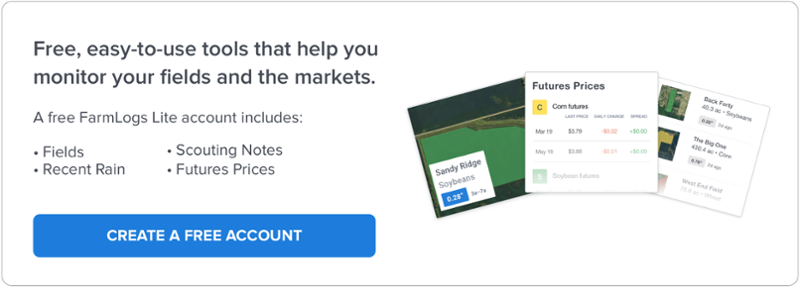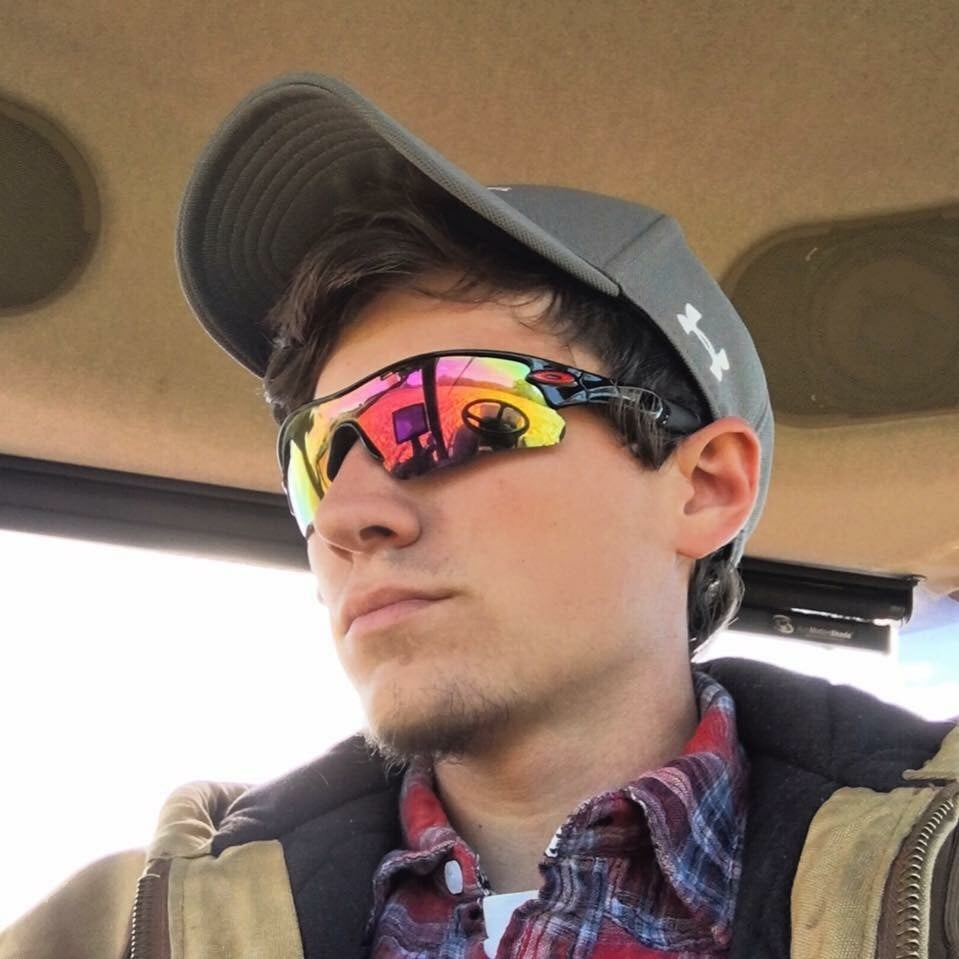When I started getting interested in precision agriculture, I was looking at different things that were out there when one day I stumbled upon FarmLogs. I thought, “Well it's free. I'll put some of our acres in it, just to see what it is.”
Bringing tech to the farm
At first, I wasn’t even using it for myself. I was working with my neighbor who was helping me get started with my own land, and getting me prepared to take over his acres when he retired. He's 68 years old, and as far as technology goes, he just isn’t the type of guy that would normally be interested in this sort of thing. He said, "Well, I've done it this way for 40 some years, it worked just fine, why do I need to change?"
You can't argue with success, but I think there are always things that you can change, and you can always look to do things a little bit better.
I ended up putting 100% of his fields into our FarmLogs account, and now he's got me using FarmLogs to keep track of things for him. He'll ask me how much it rained on a certain field, and I can tell him what we got within a few tenths of an inch just by pulling up the app.
 |
| Rainfall on one of Ethan’s corn fields in Indiana |
When he asks me questions about the farm, I just pull out my phone, open the app, and can quickly look at all of his fields. He likes that I keep track of everything, and he told me, "it's good for you to learn this information and know how to manage things, because you're going to be the one taking this over and you won’t be just driving the tractor anymore. I'm older, I don't understand any of this new technology."
“You can look at that technology and know how to use it—that's where the future's at."
Planning ahead
FarmLogs is really helpful in creating a plan for the season, and it helps me watch where I spend my money because I can look at my farm acre-by-acre and field-by-field.
In the winter time, when I'm not necessarily in the field or on the farm itself, I like to sit down with my co-ops or my fertilizer companies. I bring my laptop and as they're giving me prices, I'm putting those prices into FarmLogs and playing around with the numbers. I'll put in three or four seed numbers and three of four different chemicals and adjust those prices and rates to figure out what will work for me and what's the most cost effective. That's one thing that I really like about FarmLogs, because I can instantaneously take the prices and my average expected yield and see if going to make a profit or be at a loss. Then I can think through my budget and start to trim where I need to trim or add things in where I need to push yields.
 |
| Soybeans on Ethan’s farm |
Technology’s role in daily life on the farm
In my day-to-day, I use FarmLogs to track the growth of my crops and to see how much rainfall I’ve had. I do that alongside of going out and scouting myself, but I use FarmLogs to help me do that. There's also times where I've found Satellite Imagery especially useful; I'll be walking a field and it might looks good in one area, but as soon as I pop over the hill, I've got some 3 spots that don't look so great. When I drive by the field I can say, “yeah it looks fine from the road”, but then I get on FarmLogs and start to see some things popping up that you wouldn’t necessarily see from the road. Going out and scouting potential problem areas has been one thing that FarmLogs has definitely helped with.
I also like to use FarmLogs for the soil maps. They're fairly accurate, especially in our area where it's so hilly and you can have a field that's flat but if you go right across the road it looks like a mountain. Our fields and soil types vary so much here. On one end of the field you'll have black mud, then you'll have sand, then you'll have red clay... all of our 30 acre fields have 5 different soil types.
I've even used FarmLogs for prospecting ground. I can get on FarmLogs and see exactly how many acres the field is. In the past, I’ve even traced the field out myself in my account, because someone selling it may say it’s 50 acres, but when I go into FarmLogs and it's more like 46 after you take the ditches out and things like that. I can also look at the look at soil types for that field, and what crops have been farmed there in the past—it gives me a sense of if the land is truly farmable. You can look learn a little bit about the land and see how many acres and what soil types it has before you even have to go talk to someone about it.
  |
| Field and soil maps in Ethan’s FarmLogs account |
Precision technology that’s easy to use
FarmLogs is a lot more simple to use than you would think. It's pretty cut and dry, and it's very, very user friendly, especially compared to some other products that I've used. Not only that, but if someone had a question, they can call someone at FarmLogs and the team there would be more than happy to help you get started setting it up. Adding fields is easy to do, and that's the first step after making your account. You find yourself on the map, you find your fields, and away you go.
It's definitely something that would be very beneficial to any farmer or operation. FarmLogs has the tools that can be used for a lot different aspects of farming. Certain features can be a better fit for certain farmers: some may benefit more from budgeting, some may benefit more from imagery, and it really just depends on your operation and what you're looking for out of the product.
Follow Ethan on Instagram @the_ethan_clarke to see more photos and ask him any questions you might have!
-2.png)

